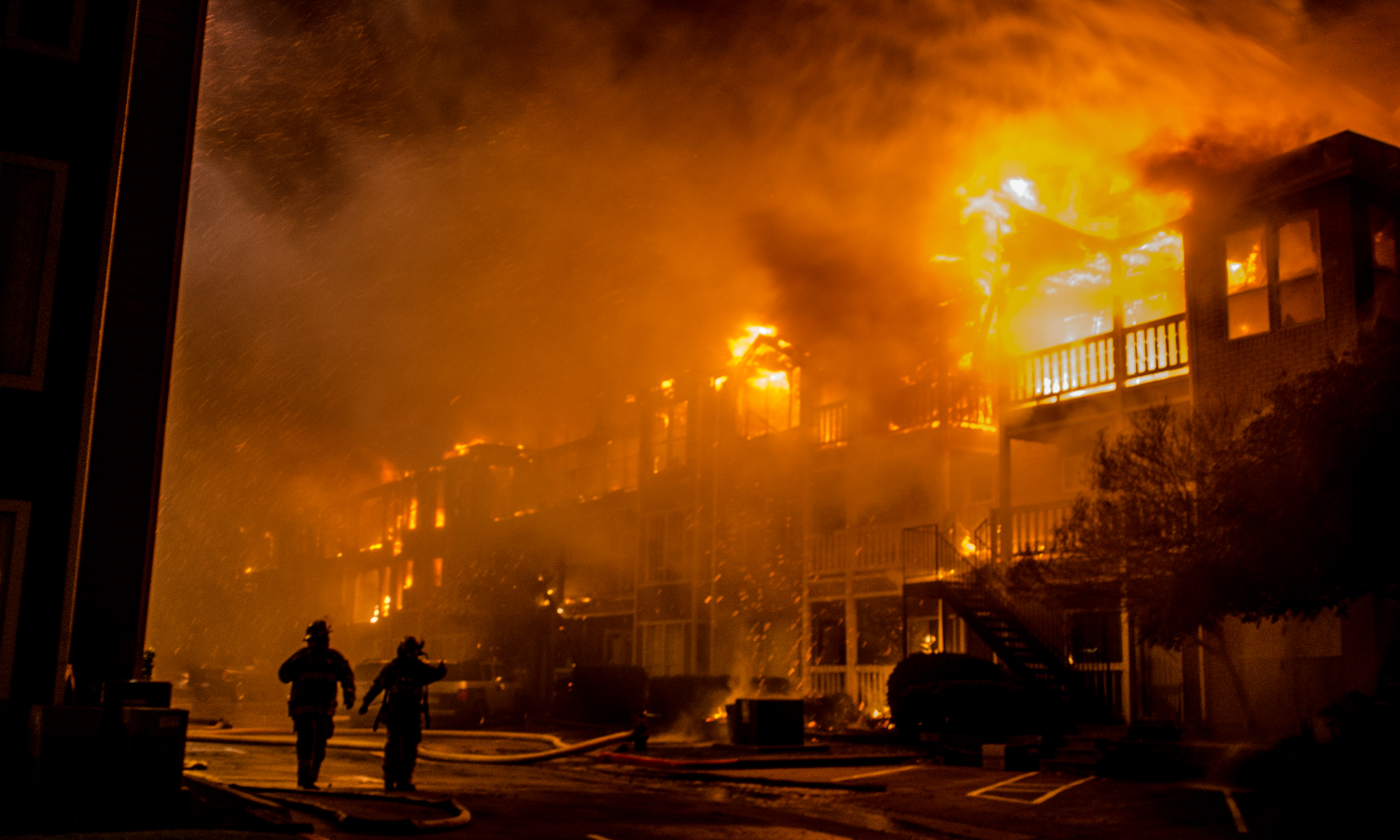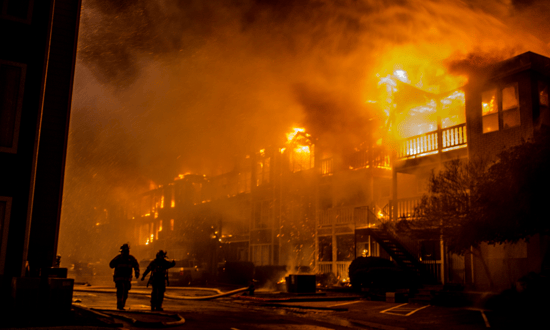America has a problem with fires, and there’s a lot we can do about it.
In February, a $135 million apartment complex in Alexandria, Virginia went up in flames and destroyed an additional 14 townhouses, 5 apartment buildings, 28 vehicles, four single family homes and a commercial building.
All the structures were completely destroyed, according to the fire department.
Less than a month earlier, the west end of Main Street in Bound Brook, New Jersey was engulfed in flames as an uncontrolled fire in an under-construction apartment building spread to a similar building across the street and wiped out several other adjacent structures. New Jersey Transit service was suspended, roads were closed and Doppler radar even reported a shift in local weather as a result of the heat and smoke.
As the Salvation Army and Red Cross continue to help people displaced by the fire, estimated losses total $52 million.
Every week, apartment buildings in America burn. In 2018, apartment fires resulted in over $1.5 billion in losses.
So why do there continue to be these catastrophic disasters?
Fire Engineering Magazine, the 140-year-old publication source for fire and emergency service information, blames it on what is called “toothpick construction.”
These massive four-and-five-story apartment complexes are referred to as “stick framed” or “bird’s nest concept.” Built with slender wooden studs, huge quantities of light-weight framing lumber make up the main structural system of a building, sitting atop a pedestal or podium of concrete.
In 2017, more than 187,000 of these apartment units were built in structures of more than 50 units each.
The result is that when a fire gets ignited in what is essentially an enormous pile of kindling, it is almost impossible to stop.
So why do we build this way? There are three main reasons.
#1: It’s cheap and the building codes allow it
Over time, pressure from developers, builders and wood industry lobbyists have caused building codes to be eased to permit lighter weight and less durable construction.
The first early US building codes from the 1920s allowed stick-frame apartment buildings of up to three stories. In the 1950s, they raised the limit to four stories – but required automatic sprinkler systems and masonry firewalls. Everything changed, however, when masonry requirements fell by the wayside in the 1960s and fire walls were required to be nothing more than stick frame and sheet rock.
Things got worse in 2009, when the new International Building Code permitted an additional level of stick framing apartment blocks. Now buildings can extend up to five stories and often sit atop two-story concrete pedestals made up of parking decks and retail establishments.
According to Michael Feigin, chief construction officer for AvalonBay Communities Inc., during the first six months of 2019 “There were 11 total-loss fires in large wood frame construction projects in the United States.”
Avalon Bay keeps up with statistics because their properties have been amongst the highest profile disasters. In 2000, their property in Edgewater, New Jersey burned to the ground while under construction. They rebuilt – and 15 years later it went up in flames again. This time, it wiped out 240 residential units and displaced more than 1,000 people.
The company also lost a major apartment building in Maplewood, New Jersey in 2017; and another in Melville, Long Island in March of 2019. After the Maplewood fire, Avalon Bay commented that costs would be covered by insurance and wouldn’t impact company profitability.
#2: Insurance will cover the cost
According to a recent report from insurance rating agency AM Best, the impact of these disasters on insurers is significant. Business Insurance Magazine notes that catastrophic fires in major metropolitan areas have caused increases in rates and deductibles for both builder’s risk and general construction insurance.
“The impact has been felt acutely by insurers writing builder’s risk exposures and by construction underwriters in general,” Best says.
“Over the last 24 months, the construction property business has taken some big losses. There have been a couple of losses of over $1 billion…that have caught the attention of the entire world marketplace. A lot of insurers have exited the business,” notes Gary Kaplan, Chicago-based president of North America construction for Axa XL, a division of Axa SA.
#3: Nothing has been done to stop it
Building codes must be changed to make future buildings safer, and residents need to be made aware of current risks. The movement has already begun, and New Jersey is leading the way.
In the wake of the 2015 Edgewater fire, New Jersey legislators introduced a bill to modify the statewide building code. Significant changes include height limitations, non-combustible fire walls, non-combustible floors, fire wardens on site during construction and labeling multifamily stick frame constructions as fire hazards by affixing a special emblem next to the main entrance. Check out full details of proposed NJ fire prevention legislation.
The National Ready Mixed Concrete Association formed a coalition of community organizations, fire safety professionals, engineers, architects and industry experts committed to strengthening the nation’s building codes and ensuring greater access to secure housing.
This coalition, called Build with Strength, stands with lawmakers and communities across the country in Los Angeles, New Jersey, Philadelphia, Massachusetts, and beyond who are currently seeking code changes to encourage the use of non-combustible construction practices.
“If developers can’t see their way clear to build safer buildings, and our elected representatives continue caving to special interests, perhaps the architects and specifiers responsible for selecting these materials will recognize their responsibility to deliver something better for their clients and our communities,” says Gregg Lewis, architect and spokesperson for Build with Strength.
“All residents and communities deserve a safe place to call home and it is time to put in place commonsense safety measures to ensure an end to these unnecessary tragedies.”
State legislative representatives need to be engaged to move these changes forward. Advocates in the concrete and masonry trades are instrumental.
Polycrete USA recently reviewed a copy of New Jersey’s proposed bill with Virginia Governor Ralph Northam and submitted it for review to the Virginia Home Builders Association.
Businesses and community members can also contact local first responder organizations, tenant advocates and insurance representatives to encourage them to make strengthening local and national building codes a top priority.
Today, Avalon Bay uses expanded masonry firewalls in all their new stick-frame multifamily projects; even though they are not required. They know too well the result of lax code requirements, having watched the second Edgewater inferno go up in flames in minutes and collapse completely within a couple of hours.
In the end, they were left with no more than pillars of concrete block stairways and elevator shafts amidst a pile of ash.
Find out how you can support the movement for safer building codes.
Pick up the torch in your community and encourage others to do the same. People’s lives may depend on it.



